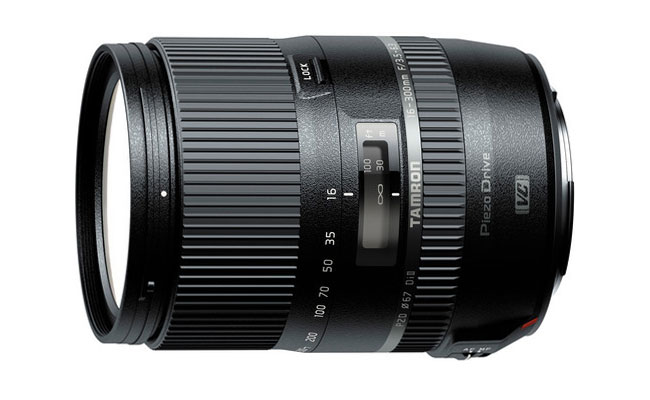-
Term:
Description: A zoom lens is any lens that can vary its focal length, (and its angle of view) by physically moving the various optics in the lens design. The term "zoom" itself does not actually correspond to a specific focal range, despite sometimes being confused with the term "telephoto". (There are wide-angle zoom lenses, mid-range zoom lenses, and telephoto zoom lenses.)
Zoom Lens
Zoom Lens Technical Explanation
A zoom lens is, technically speaking, a single lens made up of multiple glass elements, which can change their effective angle of view by moving certain elements within the lens as a whole. Visually, this gives the effect of “zooming in” or “zooming out”, while maintaining a sharp image.
In the early days of zoom lenses, some optical designs could achieve two or three different focal lengths, separately, such as 28mm and 50mm, however the optical design did not allow the lens to render a sharp image at any in-between focal length.
Oppositely, a prime lens is a lens which has a singular focal length. Generally speaking, zoom lenses are not capable of the same wide apertures that prime lenses are capable of, such as f/1.4 or f/1.2, although a handful of f/2 and f/1.8 zoom lenses have been made over the years. Also, thanks to modern computer design, both zooms and primes are capable of great image quality, even at their widest apertures.
Advantages of Zoom Lenses (Pros)
Focal length flexibility is advantageous in various shooting situations, especially in fast-paced environments where changing lenses might not be feasible. The ability to quickly adapt to different compositions makes zoom lenses ideal for capturing a wide array of subjects, from landscapes and portraits to sports and wildlife.
Another significant advantage of using zoom lenses is their compactness compared to carrying multiple prime lenses. This is particularly beneficial for travel photographers or those who need to keep their gear lightweight and portable. Additionally, zoom lenses can be cost-effective, as investing in one high-quality zoom lens might be more economical than purchasing several prime lenses to cover the same focal lengths.
Disadvantages of Zoom Lenses (Cons)
However, despite their convenience, zoom lenses have some drawbacks. One of the primary concerns is image quality. While advances in optical technology have improved zoom lenses significantly, they might not match the sheer image sharpness and overall quality delivered by high-end prime lenses. Zoom lenses can also have a variable maximum aperture, meaning that as you zoom in, the aperture may change, leading to potential exposure challenges in low-light conditions.
Furthermore, some photographers argue that using zoom lenses might make photographers lazier when it comes to composition and framing. The ease of zooming in and out might discourage photographers from physically moving and exploring different angles, which could limit their creativity and result in less engaging compositions.
Typical Zoom Lens Ranges
Many typical zoom ranges exist, partly due to their practical application, (useful zoom ranges) and partly for their optical ease-of-design.
There are wide-angle zooms, such as 16-35mm or 12-24mm. There are mid-range zooms, such as 24-70mm and 24-105mm. There are telephoto zooms, such as 70-200mm and 70-300mm.

There are also zooms known as “superzooms”, which cover a much higher total range, or magnification, such as a 28-300mm zoom lens on full-frame, or even a 16-300mm lens on APS-C sensor cameras.
Zoom lens “X” magnification
Zoom lens “magnification” is usually not a reference to the actual reproduction magnification that the lens can achieve, but the optical magnification that happens between the widest end of the zoom’s range, and the longest end. For example, a 50-100mm zoom lens would be 2x zoom, and a 50-150mm zoom would be a 3x zoom. A 28-300mm super-zoom, on the other hand, would be just over a 10x zoom!

Varifocal Lenses and Parfocal Lenses
With a varifocal lens, as the zoom is changed, focus also changes. In a parfocal lens, focus does not change as the lens is “zoomed”.
Many common photography lenses, including some high-end professional photography lenses, are varifocal, not parfocal. This is simply because it allows the lenses to be easier to design and make. Certain television and film lenses, on the other hand, are true parfocal lenses, often making them significantly larger and more expensive than a comparable varifocal lens of a similar aperture and zoom range.
Related Articles to Zoom Lens Definition
Hands On With Canon’s 2 New 70-200mm Lenses | First Look & Shoot
Canon’s 2 new 70-200 lenses have big shoes to fill. So do they fill them?
Wedding Photography DSLR Zoom Lenses – The Complete Guide
With so many different styles of photography out there, wedding photography equipment can vastly differ from one photographer to another….




Get Connected!